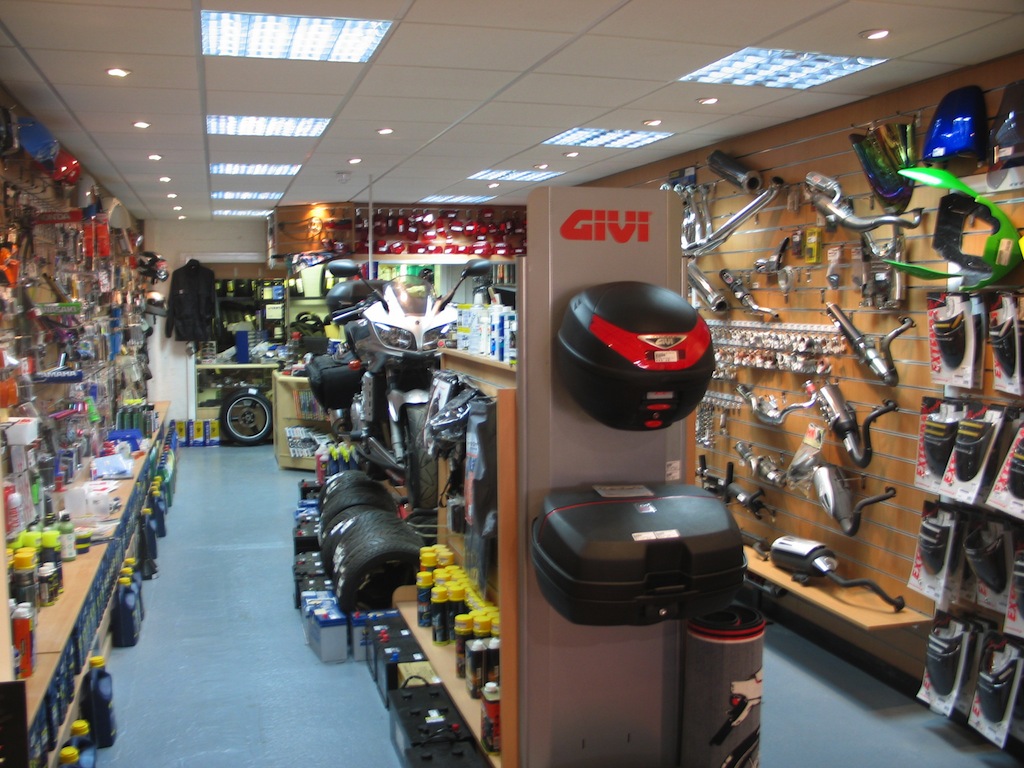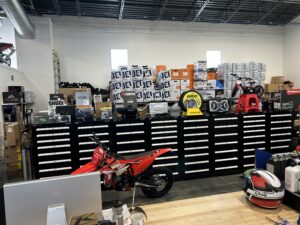Comprehending the Crucial Parts of a Bike: A Comprehensive Guide for Enthusiasts
For motorcycle enthusiasts looking to raise their riding experience and guarantee their bikes run efficiently, understanding the vital elements of a motorbike is vital. Each component, from the engine's elaborate functions to the critical duty of the stopping devices, not just affects performance however additionally safety and security and comfort. This guide will certainly stroll through the fundamental parts that every rider should recognize with, enabling educated options in both maintenance and possible upgrades. As we start this exploration, one must ask: how does each component communicate to create the seamless trip every enthusiast looks for?
Engine Parts

The camshaft plays a vital duty in managing the timing of the engine's shutoffs, making certain the accurate opening and closing necessary for reliable gas and air consumption, in addition to exhaust expulsion. This timing is important to maintaining optimum engine efficiency and performance. In addition, the carburetor or gas injection system, depending upon the bike model, is accountable for blending air with fuel in the correct proportion for burning.
The cooling system, either air or liquid-based, works to preserve the engine's temperature within functional restrictions, preventing overheating and making certain longevity - motorcycle shop. Each element, diligently made and incorporated, adds to the smooth operation of the engine, specifying the motorbike's power outcome and overall efficiency
Transmission System
Important to the bike's functionality, the transmission system makes certain efficient power transfer from the engine to the wheels. This system makes up several important components, including the clutch, transmission, and final drive, each playing an essential duty in translating the engine's power right into activity. The clutch, normally run by a hand lever, serves to involve and disengage the engine from the transmission, enabling for smooth gear adjustments and controlled acceleration.
The gearbox, commonly referred to as the transmission appropriate, includes a collection of gears that cyclists can manually change through to readjust the bike's rate and torque outcome. These gears are set up in a sequence that enables the motorcycle to speed up smoothly and preserve optimum engine efficiency across various rates. A lot of bikes make use of a consecutive transmission, calling for the cyclist to shift equipments in a fixed order.
Braking Devices
While recognizing the transmission system is crucial to utilizing a motorcycle's power, just as vital is the capability to control and quit that power properly, which is where braking devices enter into play. Brakes are critical for safety and security and efficiency, providing the rider with the necessary control to browse various terrains and problems. Usually, motorbikes include two sorts of stopping systems: disc brakes and drum brakes.
Disc brakes are much more common in contemporary bikes as a result of their remarkable performance. They include a brake disc, caliper, and pads. When turned on, the caliper presses the brake pads against the spinning disc, transforming kinetic power right into warm, thereby reducing the wheel. This system uses far better heat dissipation, consistent efficiency, and boosted stopping power, especially in wet conditions.
On the other hand, drum brakes, though less typical, are still discovered in some motorbikes. They function by pushing brake shoes against the internal surface of a drum affixed to the wheel. While typically less reliable in heat dissipation and quiting power, drum brakes are less complex and much more economical.
Comprehending these braking systems' subtleties permits riders to keep their motorcycles properly and value the engineering that ensures efficient and risk-free quiting.
Suspension and Steering
Suspension and guiding systems are essential elements that substantially influence a motorcycle's handling and experience convenience. The suspension system, being composed of forks at the front and shock absorbers at the back, takes in road abnormalities, enhancing security and control. Front forks, commonly telescopic navigate to this site or upside down, compress and rebound to reduce influences, while back shock absorbers maintain tire contact with the roadway, vital for grip and safety.
Steering, focused around the handlebars, attaches the motorcyclist to the bike's directional control. The guiding head bearings make certain check this smooth operation, enabling exact ability to move. Appropriate placement and maintenance of these bearings are critical for foreseeable guiding response and minimizing biker tiredness.
The suspension's adjustability is one more critical element; preload, damping, and rebound settings allow customization to suit various riding conditions and styles. This flexibility is crucial for optimizing efficiency, whether navigating urban streets or taking on tough trails. Technologies like digital suspension systems offer real-time changes, enhancing experience high quality across varied surfaces.

Electric Systems
After guaranteeing a controlled and smooth adventure with efficient suspension and steering systems, interest turns to the electrical systems, a critical element of contemporary motorcycles. These systems play a vital function not only in starting the engine but additionally in powering numerous elements that improve the performance and security of the motorcycle.
At the heart of a bike's electrical system is the battery, which stores electric energy essential for starting the engine and powering supporting systems - motocross gear nz. The generator or generator, paired with the rectifier-regulator, makes certain the battery continues to be billed while the bike functions, converting mechanical power into electrical energy and maintaining voltage degrees
The ignition system, one more critical part, is liable for igniting the air-fuel mix in the engine's cyndrical tubes. Modern bikes commonly use a digital ignition system, providing better efficiency and reliability compared to conventional systems.
Lights systems, consisting of headlights, tail lights, and motorcycle battery indications, are additionally important, making certain exposure and security for the rider. Additional digital components such as sensing units, control devices, and shows add to sophisticated attributes like gas injection administration, anti-lock stopping systems (ABDOMINAL), and electronic control panels, additionally improving the riding experience.
Final Thought
A complete comprehension of a motorcycle's vital components, consisting of the engine, transmission system, stopping systems, suspension, guiding, and electrical systems, is vital for fanatics aiming to optimize comfort, efficiency, and safety. Proficiency of these components permits educated decisions regarding upkeep and upgrades, inevitably enhancing the riding experience. By incorporating this expertise, motorcyclists can ensure their motorcycles run at peak performance and reliability, therefore making the most of both enjoyment and durability of their vehicles.
For bike fanatics looking to elevate their riding experience and ensure their bikes run smoothly, understanding the vital elements of a motorbike is paramount.Indispensable to the motorcycle's performance, the transmission system makes sure effective power transfer from the engine to the wheels.While recognizing the transmission system is crucial to taking advantage of a bike's power, just as vital is the capability to manage and quit that power effectively, which is where braking systems come into play. Usually, motorcycles include two kinds of stopping systems: disc brakes and drum brakes.
A complete understanding of a bike's crucial parts, including the engine, transmission system, stopping devices, suspension, steering, and electric systems, is important for enthusiasts aiming to optimize comfort, safety and security, and performance.